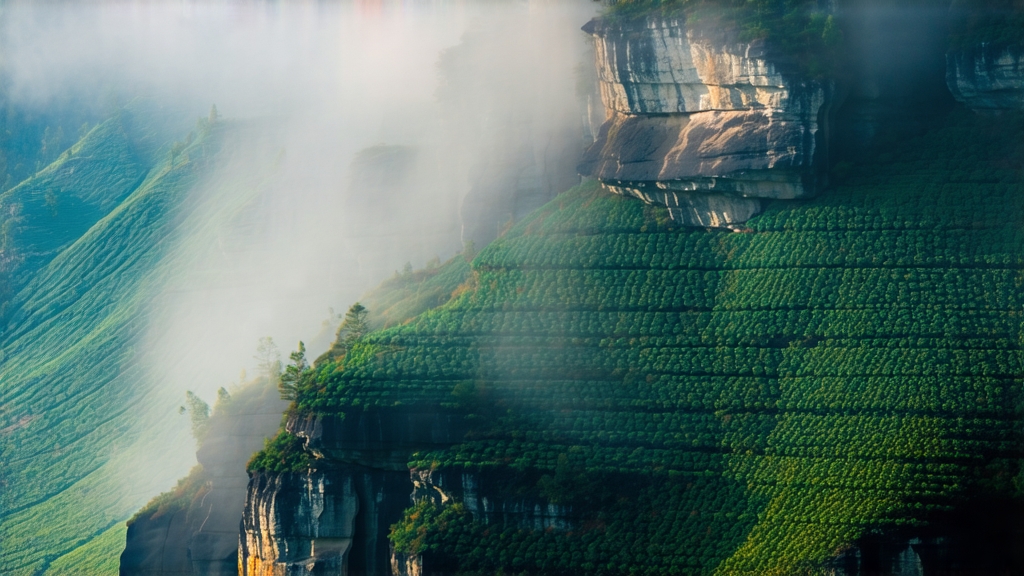
Long before English breakfast tables knew the word “black tea,” caravans loaded with slender, pitch-dark leaves left the granite gorges of the Wuyi Mountains in northern Fujian. The year was 1646, the Qing dynasty had just begun, and the tea pressed into those wicker baskets would be christened Lapsang Souchong—literally “small-leaf variety from the original high mountain.” It was the first fully oxidised tea ever documented, and its arrival in Europe rewrote the lexicon of tea: the Dutch called it “bohea,” the French “thé noir,” and the British, after one sip of its smoky perfume, simply called it extraordinary.
History: From Ming Loyalists to London Coffee-Houses
Legend claims that Lapsang was born by accident when retreating Ming soldiers commandeered a Tongmu village factory and demanded speed. To dry the leaves overnight, workers spread them over pinewood embers; the smoke impregnated the leaf, creating an aroma so arresting that Dutch traders paid double. By 1669 the British East India Company listed “Lapsang Souchong” as a separate commodity, priced above green tea. Samuel Pepys drank it in 1660; Queen Victoria tucked it into her royal gift list; and in 1840 it became the base for the very first Earl Grey blend. Thus a Chinese mountain smokehouse gave the West its archetype of “black” tea.
Terroir: Why Only Tongmu Tastes Like Tongmu
The Wuyi Biosphere Reserve is a karst labyrinth where mist rises off the Jiuqu (“Nine Bends”) Stream, softening ultraviolet light and forcing the tea bush to synthesise more L-theanine and volatile oils. The indigenous cultivar—Xiao Zhong or “small kind”—grows on weathered granite soils so poor in nitrogen that roots plunge three metres, mining minerals that translate into a cool, stony sweetness. Below 600 m elevation the same plant loses the orchid note that balances the smoke, so only 68 square kilometres within Tongmu village can legally sell authentic Lapsang Souchong under China’s 2002 geographical indication law.
Two Families, Two Styles: Zheng Shan vs. Wai Shan
Purists divide Lapsang into two genealogies. Zheng Shan (“original mountain”) is smoked only with local Masson pine that has been aged two winters; the wood’s resin is low, yielding a clean, incense-like fragrance reminiscent of lapsang resinoid and longan fruit. Wai Shan (“outside mountain”) uses faster-burning fir or cedar, giving a sharper creosote punch. Within Zheng Shan, two finishing techniques further split the market: the traditional “Song Xun” (pine-smoke) and the newer “Wu Xun” (un-smoked), which relies on charcoal heat and 18-hour oxidation to coax natural malt and honey notes for drinkers who want Wuyi minerality without campfire.
Craft: A Smoke-Curtain over 28 Hours
Picking begins at dawn on the first clear day after Grain Rain, when two leaves and a bud still hold overnight dew. The fragile shoots are withered across second-floor lattices suspended over dying pine embers; the leaf loses 68 % moisture while absorbing phenols that will later bond with sugars to create guaiacol and 4-methylguaiacol—the molecules behind Lapsang’s signature clove-and-bacon aroma. Rolling follows, 70 minutes of arm-pressure that ruptures cells without breaking the waxy cuticle, ensuring an even copper liquor. Oxidation happens in cedar-lined trays stacked inside a smoke-filled pine room kept at 26 °C and 85 % humidity; master craftsmen “listen” to the leaf by rubbing it between forefinger and thumb every 20 minutes, waiting for the exact moment when green bitterness flips to dried-fruit sweetness. Finally the leaves are re-fired for 30 seconds above 90 °C pine coals, locking in the red-black colour and a moisture content below 6 %.
Grades: From Pine Needle to Pekoe Tip
Western importers once used confusing terms like “OP” or “Broken Orange Pekoe,” but Tongmu farmers sort by leaf integrity and smoke intensity. Grade 1 “Pine Needle” contains only unbroken tips, glossy like obsidian, producing a liqueur the colour of sherry with a lingering lychee finish. Grade 2 “Souch